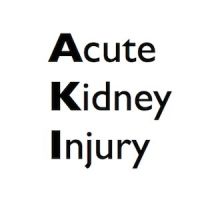Risk of acute kidney injury (AKI) can be difficult to predict in older adults, due to age-related declines in glomerular filtration rates, which can affect baseline serum creatinine, and because serum creatinine is influenced by muscle mass, nutritional status and volume distribution. A study published in BMC Medical Informatics and Decision Making built and evaluated machine learning models for detection and prediction of AKI in hospitalised patients.
Rohit J. Kate, PhD, from the Department of Health Informatics and Administration, University of Wisconsin-Milwaukee, and colleagues, built models using machine learning methods used on data from 25,521 hospital stays in one calendar year to predict at 24 hours of admission whether a patient will develop AKI during the rest of the hospital stay, and to detect AKI anytime during hospital stay in patients over the age of 60. Four separate models were tested (logistic regression, support vector machines, decision trees and naïve Bayes) along with their ensemble on AKI prediction and detection tasks for patients presenting with chronic kidney disease I and II. Patient demographics, laboratory tests, medications and comorbid conditions were used as the predictor variables. The models were compared using the area under ROC curve (AUC) evaluation metric.
See Also: Protocol for Identifying Patients at Risk of AKI
In relation to the trade-off between how soon to predict AKI and the accuracy of predicting AKI, the models in the study make AKI prediction at 24 hours from admission, which the authors explain as a reasonable compromise for the trade-off between the models’ usefulness (clinical relevance) and its predictive power (scientific rigour). They note that their models can be easily adapted to make predictions at any other desirable time from admission (12 hours, 48 hours etc.). They add that their model is capable of detecting AKI in the absence of serum creatinine measurement, and it may prompt healthcare staff to take serum creatinine measurement.
Each model performed better at detecting AKI than predicting it. Logistic regression performed the best for AKI detection (AUC 0.743) and was a close second to the ensemble for AKI prediction (AUC ensemble: 0.664, AUC logistic regression: 0.660). Factors found to be significant for both AKI detection and risk prediction were history of prior AKI, use of combination drugs such as ACE inhibitors, NSAIDS and diuretics and presence of comorbid conditions such as respiratory failure.
The authors plan future studies using natural language processing techniques on AKI-relevant information contained in unstructured clinical notes, as this study relied on structured information from the electronic health record.
Image credit: Pixabay
Rohit J. Kate, PhD, from the Department of Health Informatics and Administration, University of Wisconsin-Milwaukee, and colleagues, built models using machine learning methods used on data from 25,521 hospital stays in one calendar year to predict at 24 hours of admission whether a patient will develop AKI during the rest of the hospital stay, and to detect AKI anytime during hospital stay in patients over the age of 60. Four separate models were tested (logistic regression, support vector machines, decision trees and naïve Bayes) along with their ensemble on AKI prediction and detection tasks for patients presenting with chronic kidney disease I and II. Patient demographics, laboratory tests, medications and comorbid conditions were used as the predictor variables. The models were compared using the area under ROC curve (AUC) evaluation metric.
See Also: Protocol for Identifying Patients at Risk of AKI
In relation to the trade-off between how soon to predict AKI and the accuracy of predicting AKI, the models in the study make AKI prediction at 24 hours from admission, which the authors explain as a reasonable compromise for the trade-off between the models’ usefulness (clinical relevance) and its predictive power (scientific rigour). They note that their models can be easily adapted to make predictions at any other desirable time from admission (12 hours, 48 hours etc.). They add that their model is capable of detecting AKI in the absence of serum creatinine measurement, and it may prompt healthcare staff to take serum creatinine measurement.
Results
Each model performed better at detecting AKI than predicting it. Logistic regression performed the best for AKI detection (AUC 0.743) and was a close second to the ensemble for AKI prediction (AUC ensemble: 0.664, AUC logistic regression: 0.660). Factors found to be significant for both AKI detection and risk prediction were history of prior AKI, use of combination drugs such as ACE inhibitors, NSAIDS and diuretics and presence of comorbid conditions such as respiratory failure.
Next Steps
The authors plan future studies using natural language processing techniques on AKI-relevant information contained in unstructured clinical notes, as this study relied on structured information from the electronic health record.
Image credit: Pixabay
References:
Kate RJ, Perez RM, Mazumdar D, Pasupathy KS, Nilakantan V (2016) Prediction and detection models for acute kidney injury in hospitalized older adults. BMC Med Inform Decis Mak,16: 39. doi: 10.1186/s12911-016-0277-4.
Latest Articles
acute kidney injury, models, prediction, detection
Risk of AKI can be difficult to predict in older adults, due to age-related declines in glomerular filtration rates, which can affect baseline serum creatinine, and because serum creatinine is influenced by muscle mass, nutritional status and volume distr



























